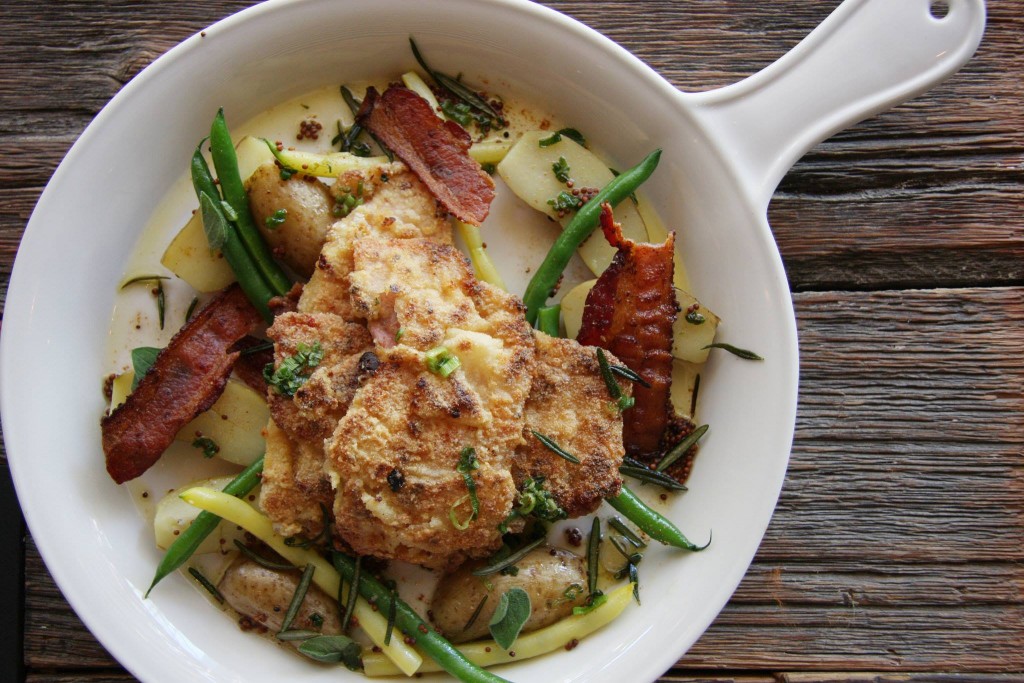
Canada is known for many things — maple syrup, hockey, Anne Murray, winter — but trying to nail down one definitive meal that connects Canadians is nearly impossible. The definition of Canadian cuisine is almost as broad and wide-ranging as the geography of the country itself, with Atlantic coast Maritimers claiming the mighty lobster as their own, and the Pacific coast home to the world’s best salmon.
If “American as apple pie” still applies, what’s the metric conversion? Canadian as poutine? If the latest McMenu carries any weight, then it’s beefy burgers from Alberta, maple-y poutine from Quebec and lobster rolls from out East. With Toronto being smack in the middle — the epicentre of Canada (OK, the universe) — we sat down with a few of Toronto’s self-professed Canadian restaurants that pay homage to the mighty beaver.
Boralia owners Wayne Morris and Evelyn Wu Morris took a unique approach to Canadian cooking. “Our menu takes inspiration from the dishes of the people who built this country. We offer modern interpretations of historic recipes of the Native tribes and the early settlers, as well as the different immigrant groups that came and settled in the past few centuries.”
ADVERTISEMENT |

Evelyn and Wayne have a clear vision of what defines Canadian cuisine. “We scoured historic cookbooks for recipes that we could tweak and modernize, as well as general history books on life in Canada, looking for anything that we could research further. We read lots of books on Native recipes, cooking philosophies, and the use of indigenous plants. We wanted to open a restaurant where we could incorporate the flavours of Wayne’s Acadian background and my own Chinese culture without being kitschy. Creating a menu that celebrates and showcases the foods and dishes of the many different people who built Canada was a no-brainer way of doing that.”
Tea-n-Bannock owner Enos Miller shares that native sentiment. “First, we look at if it’s authentic and where it is from, and what era. How does it fit in with the aboriginal culture, present or past. We look to see if it fits our definition of what our customers are searching for.” Tea-n-Bannock opened because “there wasn’t anything else in Toronto; we wanted to stay authentic. A number of us were excited about starting a restaurant with this vision. We felt it was needed in the community.”

Menus from both restaurants are undeniably Canadian, but there are obviously countless more interpretations of Canadian cuisine. General Manager Chris Meyer from Hy’s Steakhouse reckons there’s nothing more Canadian than a slab of Alberta beef. Their chain of steakhouses have been in Canada for more than 60 years and exclusively carry Alberta beef; no Wagyu or Kobe in sight.
But does using only Canadian ingredients define you as a Canadian restaurant? When asked what he thought the quintessential Canadian food would be, the one to unite us all, Chris wisely offers “Bacon.” Safe choice — but that what about kosher/Muslim/vegan diets? Toronto is the most multicultural city in the world, the biggest city in Canada, so how do you encompass all these ethnic eaters onto one plate?
ADVERTISEMENT |

You don’t. As Canadians, one of our most unique strengths is embracing other cultures and accepting and adapting things as our own. Food is no exception, with restaurants adopting and reinterpreting Canadian classics into modern masterpieces — like the outstanding Folded Pork Tourtière ($18) from O&B owned Bannock Restaurant. Plates like this are creative, delicious and distinctly Canadian, which is why you’ll spy poutines popping up on menus all over the U.S. (including Smoke’s opening in LA recently). You can top poutine with curds and gravy, pulled pork and sriracha sauce, or even maple syrup and bacon a la golden arches. Just don’t call it disco fries, okay?

Related Link: New tableside menu at Hy’s Steakhouse
What’s your favourite quintessential Canadian cuisine? Let Vv Magazine know in the comments below or tweet us @ViewtheVibe.






